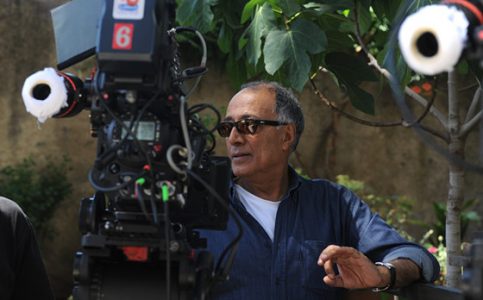
Abbas Kiarostami is a familiar name to many people around the world. Since countless internet sites about him exist. He is considered by many as one of the best filmmakers of cinema. The filmmaker is a source of pride, because through his films, Kiarostami manages to present a new, refreshing image of Iran, a poetic outlook one can’t find in any other Iranian movie.
Like Kurosawa or Hitchcock, Kiarostami successfully creates a unique filmmaking style, the Kiarostami style, and in the last thirty years, his style has been a source of inspiration for many directors around the world. Kiarostami has been one of the pillars of cinema for many years, and whether anyone likes or dislikes his movies, no one can omit his name from the files of contemporary cinema. He is a director whose movies any cinema lover must watch attentively.
Thus, we compiled the list below, especially for those who have seen his movies and those who have not. We hope, after reading the entries, people are excited and inspired enough to watch his movies. If so, we suggest cinephiles watching them in chronological order; only in this way film fans will understand how the director’s style evolved, and how Kiarostami became Kiarostami.
1. The Traveler (1974)
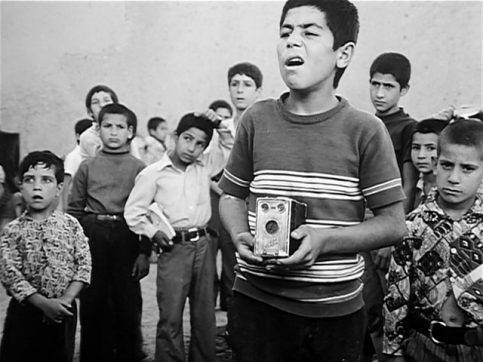
Kiarostami’s first feature film pays homage to neo-realism and Francois Truffaut’s 400 Blows (1959). The Traveler narrates the story of Qassem Julayi (Hassan Darabi), a wayward teenager who is in love with soccer, and his dream is to watch a match at the Amjadie stadium in Tehran. To accomplish his goal, he steals money and tries to sell a secondhand watch and a broken camera.
Pretending to take photos of his classmates, he also deceives and receives money from them. Toward the end, he sells his soccer ball and portable soccer goals. After a long day of making enough money, he goes to Tehran, and when he reaches the stadium, he is exhausted and falls asleep; when he wakes up, he discovers that the match is finished, and he is alone in the stadium.
Like any debut feature, the movie has some flaws. For instance, some scenes lack the necessary linking shots. In the scene when Qassem enters the classroom, for instance, the cameraman simply can’t place him in the frame, so the audience hears sound of a door then sees a sharp cut, and suddenly Qasem is behind his desk. Moreover, there is stylistic inconsistency; the director uses dramatic music in “exciting” scenes, which contrasts the film’s overall realistic/documentary style.
Nevertheless, these examples are all elements of the future “Kiarostami” style, which emphasizes realism; documentary and photography style; children as main characters; ignorant adults; thin plot line; and lonely protagonists. The Traveler may not be a perfect film, but after watching it, one will certainly know the director has a promising future.
Best Scene: The audience will never forget the whole sequence when Qassem deceives his classmates and pretends to take their picture.
2. The Report (1977)
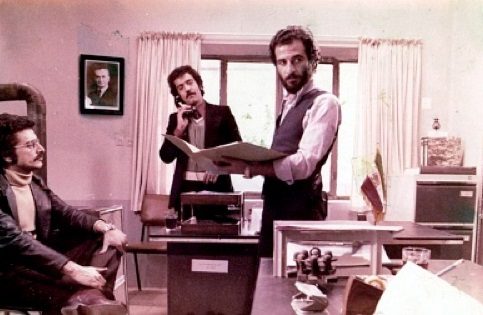
The Report chronicles the story of a man whose life unravels when he is suspended from his job. Thereafter, he quarrels with his wife, which causes him to make an important decision. Though realistic, The Report is more akin to Iranian rare modern dramas, such as The Brick and Mirror (Khesht va Ayeneh, 1965), directed by Ebrahim Golestan, as well as other than neo-realism films.
The Report focuses on how losing one’s job can affect a man’s behavior and lead to detrimental actions, like suicide. The man, in the final scene, makes the decision to leave his wife and child behind—not because he is a loser, but because he thinks his absence is the only way they may have a future.
The Report is the most interesting film of Kiarostami’s career. Though the film is a domestic melodrama, the main characters are not children. The actors are professional, the story line is well developed, and generally one will not notice any technical flaws. Movies that Kiarostami shot before and after The Report always consist of scenes that people assume the camera shakes or the viewer believes some connecting shots are missing.
Best Scene: The scene in which the man goes to a diner. While waiting for his sandwich, the man listens to drunken people discussing important, philosophical and existentialist issues.
3. Where Is the Friend’s Home? (1987)
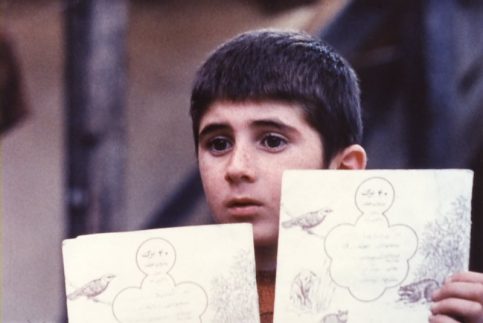
Where Is the Friend’s Home? is a pivotal point in Kiarostami’s career; it is a movie fans can call Kiarostamiesque. The film is the first safe destination of Kiarostami’s long journey to find a unique cinematic language that is both poetical and realistic. The film’s Iranian title derives from a poem by Sohrab Sepehri, an Iranian poet who is well-known for his love of nature and village life. Sepehri, who is also a painter, has greatly influenced Kiarostami’s films (In fact, Kiarostami’s photos contains Sepehri’s signature brush strokes.) Where Is the Friend’s Home? tackles the same morality questions that occupied Sepehri’s mind for years.
In this film, Kiarostami demonstrates the innocence of children and the morality of the villagers. In his long journey to find his classmate, Ahmed (Babek Ahmed Poor) understands how cruel and ignorant an adult’s world is. In the midst of the narrative, Kiarostami elevates some of his unique stylistic elements: balanced combination of documentary and fiction (docu-fiction), rare usage of music, and sparse plot line.
Where Is the Friend’s Home? is such an honest and crafty movie about being a young adult. Kiarostami was only forty-seven when he filmed this movie which earned him international recognition. During Locarno International Film Festival in 1989, the director was awarded the Bronze Leopard, the FIPRESCI prize (special mention), and Prize of the Ecumenical Jury. The film deservedly entered BFI list of the “50 films you should see by the age of 14.”
Best Scene: Almost the whole movie; the final scene is key when Ahmed returns his classmate’s notebook to show the child that Ahmed finished the friend’s homework.
4. Close-Up (1990)
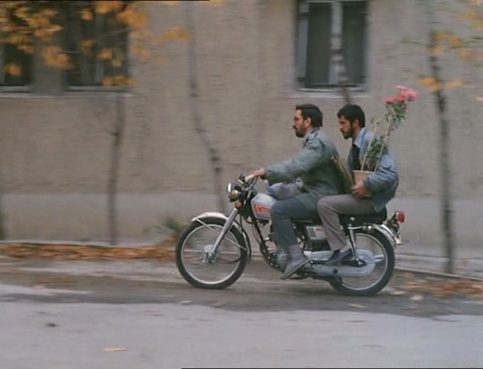
Kiarostami has always been interested in documentaries and presenting reality in cinema. Therefore, Close-Up, which refers to a cinematic technique, is a movie about the power of cinema. It is not surprising to know that the director wrote the script of Close-Up based on a news story about a man who impersonates famous Iranian film director, Mohsen Makhmalbaf.
Another delicately balanced docu-fiction, the audience views both Makhmalbaf and the impersonator (Hamid Sabzian). As the movie moves forward, the audience learns that the impersonator doesn’t introduce himself as Makhmalbaf for financial reasons; he loves cinema and enjoys being called Makhmalbaf.
Close-Up helped increase Kiarostami’s international recognition—it was awarded Quebec Film Critics Award at the Montreal International Festival of New Cinema and Video and FIPRESCI Prize at the International Istanbul Film Festival. In the 2012 Sight & Sound poll, it was voted, by critics, as one of “The Top 50 Greatest Films of All Time.”
Best Scene: There is a long, memorable scene in which two main characters of the movie pass different streets on a motorcycle.
5. Life, and Nothing More… (1991)
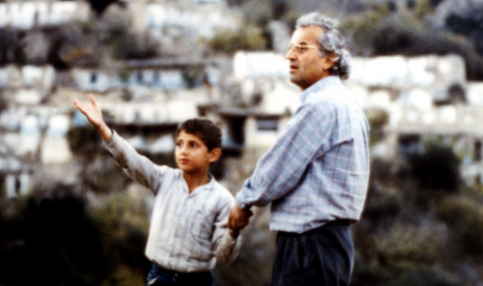
The second part in the “Koker trilogy” (the first is Where Is the Friend’s Home?) narrates the story of a director in search of the actors in Where Is the Friend’s Home? after the disastrous Koker earthquake of 1990. Though the movie has a promising beginning, it is almost impossible to fathom that the film is based on one idea (life). That’s why the director’s journey at some points seems dull, and his encounters with different people who have lost loved ones are not dramatically fruitful.
However, in Life, and Nothing More… the audience isn’t searching for anything dramatic; if Close-Up (1990) is a fiction film based on real life events, Life, and Nothing More… is a documentary with few fictional elements. Thus, Life, and Nothing More… is a must watch for any Kiarostami fan, because the director uses, for the first time, “the dashboard camera” technique that matures in Taste of Cherry (1997) and elevates in Ten (2002).
This film introduced Kiarostami to Cannes Film Festival (and the director’s second home, France); it was presented in the Un Certain Regard section of the ceremony, and the critics lauded it.
There are many scenes in Life, and Nothing More…, for instance, the scene that reveals only the highway while the audience hears non-diegetic dialogue.
6. Through the Olive Trees (1994)
![Title: THROUGH THE OLIVE TREES / UNDER THE OLIVE TREES ¥ Year: 1994 ¥ Dir: KIAROSTAMI, ABBAS ¥ Ref: THR132AB ¥ Credit: [ FARABI CINEMA/KIAROSTAMI / THE KOBAL COLLECTION ]](https://world.pulse.rs/wp-content/uploads/2016/07/through-the-oliver-trees-483x315.jpg)
The last part of the “Koker” trilogy, and one of Kiarostami’s best films to date, is Through the Olive Trees. This time, the film chronicles a director named Mohamad Ali Keshavarz—a kind, unforgettable face—who happens to be shooting a film, “Life, and Nothing More….”.
Through the Olive Trees is a very simple, light-hearted romance movie, but if one reads between the “scenes”, he or she will realize that like Close-Up (1990), Through the Olive Trees is another film about the power of cinema. Hossein, a local actor (played by Hossein Rezai), loves Tahere (played by Tahere Ladanian), but she rejects him. During their on-screen “performance,” Hossein uses this opportunity to propose marriage to Tahere and convince her that he is a suitable husband.
However, in order for Hossein to follow through, the director, Mohamad, supports Hossein’s proposal. For example, Mohamad asks Tahere to call Hossein by his name, and for Hossein to follow Tahere among olive trees and talks to him.
Through the Olive Trees is a masterful work that reveals that Kiarostami has reached the pinnacle of his career and also the zenith of his fiction/documentary style. (When watching the film, people should remember to search for Iranian director Jafar Panahi—in the blue suit shirt and jeans—who plays the directors’ assistant!) Moreover, this film competed for the Palme d’Or in Cannes and affirmed Kiarostami’s position as one the most talented contemporary filmmakers of all time.
Unlike the rest of Koker trilogy, the film is absent of a soundtrack, except some music during the opening and ending titles. The final scene, which is one of the most memorable cinematic scenes of the 1990’s, confirms that Kiarostami knows how to utilize his cinematic painting experiences, as well as transform a melodramatic scene into a poetic one.
Best Scene: The memorable final scene in which Hossein follows Tahere “through the olive trees” to propose to her. In an extreme long shot, Hossein follows and talks to Tahere, who finally turns, looks at, and says something to Hossein that compels Hossein run back. The audience must decide, at this point, what Tahere’s choice is. . .
7. Taste of Cherry (1997)
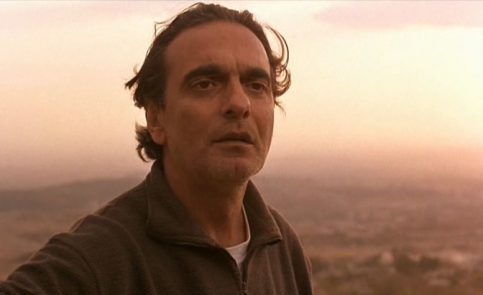
Kiarostami’s masterpiece is the story of a man named Badii (Homayoun Ershadi), who looks for someone to bury him when he is dead. The movie is simplistic, yet complex, and open to various interpretations. It is the first real minimal movie of Kiarostami’s—a critical point in his career that awarded him “Palme d’Or” in Cannes, but also divided critics: Roger Ebert hated it, while Jonathan Rosenbaum hailed it.
A vehicle—a visual motif Kiarostami started using since Life, and Nothing More…, as well as the primary location of this movie—is an actual “place” (even character) in this film. The vehicle as the primary location also resembles a graveyard, which symbolizes Badii and Kiarostami’s outlook on life and death.
Though Taste of Cherry is a bleak movie and story of a man on the verge of suicide, it has a hidden comical layer, which only an Iranian audience may understand. Nevertheless, this comical tone (something rare in Kiarostami movies) is created through the witty and smart discourse of Badii’s passengers. It is through these dialogues that Kiarostami presents his philosophy of life: depressing and gloomy while also pleasurable and full of happiness. The audience understands that Badii’s decision is going to change, and while he is lying in the grave, he hopes he will not die.
Kiarostami deliberately didn’t use any music in this movie, except for the final scene when the audience hears a non-diegetic trumpet piece by Louis Armstrong, which is a tune that sings about death being just around the corner, and it accentuates the double meaning of the film’s ending. Jonathan Rosenbaum— who wrote about the “the first English Study of an Iranian director” (University of Illinois Press) stated thus about Taste of Cherry:
“The most important thing about the joyful finale is that… it does invite us into the laboratory from which the film sprang and places us on an equal footing with the filmmaker, yet it does this in a spirit of collective euphoria, suddenly liberating us from the oppressive solitude and darkness of Badii alone in his grave. Shifting to the soldiers reminds us of the happiest part of Badii’s life, and a tree in full bloom reminds us of the Turkish taxidermist’s epiphany — though the soldiers also signify the wars that made both the Kurdish soldier and the Afghan seminarian refugees, and a tree is where the Turk almost hung himself. Kiarostami is representing life in all its rich complexity.”
Rosenbaum is right: the ending reminds the audience of the final scene in Holy Mountain (Alejandro Jodorowski), as Taste of Cherry is both depressing and cheerful, and it’s the audience, as well his philosophy to decide if life is a cul-de-sac or road to take and enjoy the taste of cherry while walking on it.
8. The Wind Will Carry Us (1999)
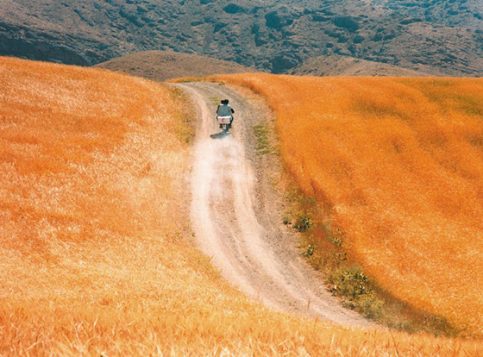
The follow-up film to Taste of Cherry (1997) is The Wind Will Carry Us, which also addresses life and death. It is not surprising that death obsessively consumed Kiarostami’s mind ever since he was fifty-nine (see The Wind Will Carry Us).
The title stems from a poem, written by the most important female poet of Iran, Forough Farrokhzadl, the film references Omar Khayyam’s poems as well. Khayyam’s poems are usually about seizing the moment; the film’s references to Khayyam’s pieces create a comedic effect for the film, especially when the journalists are waiting for the old woman’s death!
The movie was very successful in festivals and among critics—at the Venice Film Festival, the movie was nominated for the Golden Lion and won the Grand Special Jury Prize (Silver Lion), the FIPRESCI Prize, and the CinemAvvenire award.
Actor J. Hoberman explains the film exquisitely: “It’s part of the movie’s formal brilliance that, suddenly, during its final 10 minutes, too much seems to be happening. The Wind Will Carry Us is a film about nothing and everything—life, death, the quality of light on dusty hills.”
9. Ten (2002)
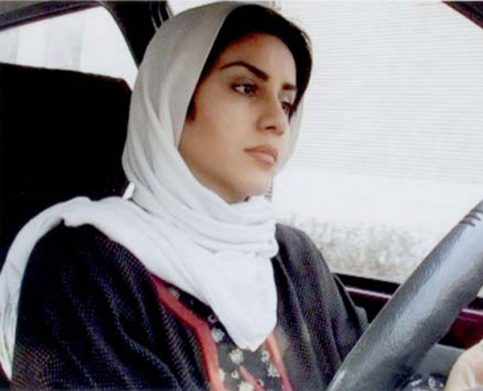
In the 2000’s, Kiarostami began making experimental movies—Ten is the first and Shirin (2008) is the last. Ten is Kiarostami’s most accomplished experimental film, however, as it is his first movie about women, as well as his most fruitful effort in eliminating the director during the course of filmmaking. He tried restricting his director’s role as much as possible, using very little camera movements, and allowing the actors to improvise.
Thus, the entire film is shot with a dashboard camera in which the camera focalizes on these characters—the director uses the “point-of-view” shot from the character’s perspective: the driver (a divorced woman) or her passengers (her son, other women, etc.)
The improvisation technique Kiarostami uses also provides the audience with the notion that the director didn’t have a script. However, the dialogue between the women is so unified, which shows that Kiarostami plays an important role in directing these semi-improvised conversations. Ten is Kiarostami’s first movie about different type of women, and today he proudly continues to make these types of films.
Ten is also considered one of Kiarostami’s most successful films. It was nominated for the Palme d’Or at the 2002 Cannes Film Festival and ranks number 447 on the 2008 list of the “500 greatest movies of all time,” which was compiled by Empire Magazine. In 2010, Empire Magazine ranked the film No. 47 in its “The 100 Best Films of World Cinema.” The French film magazine Cahiers du Cinéma ranked the film 10th place in its list of Best films of the decade: 2000-2009.
Best Scene: All the scenes in which the driver’s son is present. He talks so passionately and arrogantly—his speech is unforgettable.
10. Certified Copy (2010)
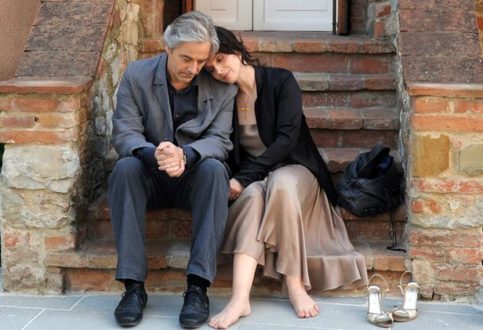
Kiarostami’s first film shot entirely outside Iran premiered renowned French actress Juliette Binoche, who is long-time friends Kiarostami; though Binoche played a tiny role in Shirin (2008), Certified Copy is Kiarostami’s first feature length film in which she stars. Certified Copy is another experimental project for Kiarostami wherein he creates a film that is closer to the “true” definition of cinema.
This film—though made outside Iran and is available in other languages besides Persian (French, English and Italian) — is Kiarostamiesque in many ways. The movie is about how love can be genuine or fake, and it demonstrates that Kiarostami never forgets his own style—it recounts the adventures of the characters in a single day; a vehicle is the primary location in this film; and the cinematography trumps the non-diegetic dialogue of the characters.
Kiarostami illustrates his skillful filmic discourse—realistic dialogue that resembles everyday speech, but contains deeper meanings and layers. The film premiered at the 2010 Cannes Film Festival where Binoche won the Best Actress Award for her performance.
Best Scene: The final scene in which the audience thinks they know the woman so well, but suddenly realize that she doesn’t even have a name!
Author: Hossein Eidizadeh

You must be logged in to post a comment Login